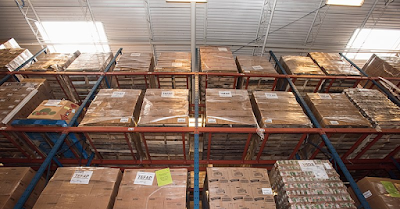Serial numbers and losing business
Here's a story about how something innocuous and low-level like serial numbers can damage your reputation and lose you business. I have advice on how to avoid the problem too!
Numbered by design
Years ago, I worked for a specialty manufacturing company, its products were high precision, low-volume, and expensive. The industry was cut-throat competitive, and commentary in the press was that not every manufacturer would survive; as a result, customer confidence was critical.
An overseas customer team came to us to design a specialty item. The company spent a week training them and helping them design what they wanted. Of course, the design was all on a CAD system with some templated and automated features. That's where the trouble started.
One of the overseas engineers spotted that a customer-based serial number was automatically included in the design. Unfortunately, the serial number was 16, implying that the overseas team was only the 16th customer (which was true). This immediately set off their alarm bells - a company with only 16 customers was probably not going to survive the coming industry shake-out. The executive team had to smooth things over, which included lying about the serial numbers. As soon as the overseas team left, the company changed its system to start counting serial numbers from some high, but believable number (something like 857).
Here's the point: customers can infer a surprising amount from your serial numbers, especially your volume of business.
Invoices
Years later, I was in a position where I was approving vendor invoices. Some of my vendors didn't realize what serial numbers could reveal, and I ended up gaining insight into their financial state. Here are the rules I used to figure out what was going on financially, which was very helpful when it came to negotiating contract renewals.
- If the invoice is unnumbered, the vendor is very small and they're likely to have only a handful of customers. All accounting systems offer invoice generation and they all number/identify individual invoices. If the invoice doesn't have a serial number, the vendor's business is probably too small to warrant buying an accounting system, which means a very small number of customers.
- Naive vendors will start invoice numbering from 1, or from a number like 1,000. You can infer size if they do this.
- Many accounting systems will increment invoice numbers by 1 by default. If you're receiving regular invoices from a vendor, you can use this to infer their size too. If this month's invoice is 123456 and next month's is 123466, this might indicate 10 invoices in a month and therefore 10 customers. You can do this for a while and spot trends in a vendor's customer base, for example, if you see invoices incrementing by 100 and later by 110, this may be because the vendor has added 10 customers.
The accounting tool suppliers are wise to this, and many tools offer options for invoice numbering that stop this kind of analysis (e.g. starting invoices from a random number, random invoice increments, etc.). But not all vendors use these features and serial number analysis works surprisingly often.
The German tank problem
Serial number analysis has been used in wartime too. In World War II, the allied powers wanted to understand the capacity of Nazi industry to build tanks. Fortunately, German tanks were given consecutive serial numbers (this is a simplification, but it was mostly true). Allied troops were given the job of recording the serial numbers of captured or destroyed tanks which they reported back. Statisticians were able to infer changes in Nazi tank production capabilities through serial number analysis, which after the war was found to be mostly correct. This is known as the German tank problem and you can read a lot more about it online.
My advice
- Always number your invoices and start the numbering from some high, but believable, number.
- Increment your invoices using an offset that's not 1. Use your accounting package's features to obfuscate how many invoices you're sending out by setting the invoice number appropriately.
- Use customer IDs that do not give away how many customers you have (so there's no customer 1, customer 2 etc.). Review every artifact a customer might conceivable see and ensure there's nothing that gives away how many customers you have (this means checking folder numbers, checking any generated URLs etc.).
Simple things say a lot
The bottom line is simple: serial numbers can give away more about your business than you think. They can tell your customers how big your customer base is, and whether it's expanding or contracting; crucial information when it comes to renegotiating contracts. Pay attention to your serial numbers and invoices!





